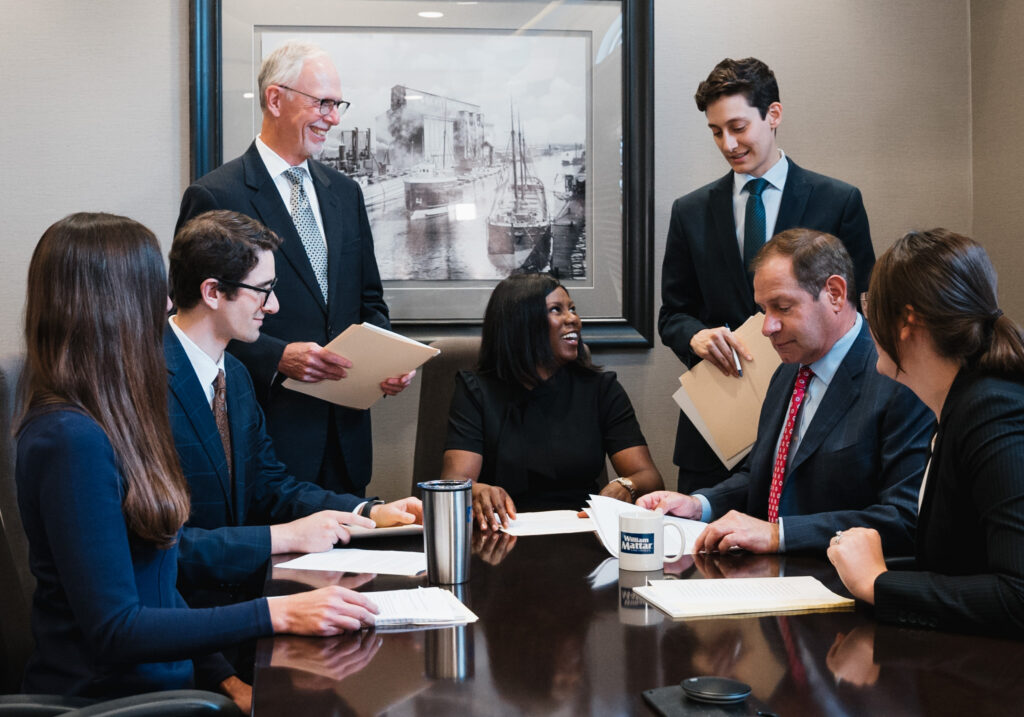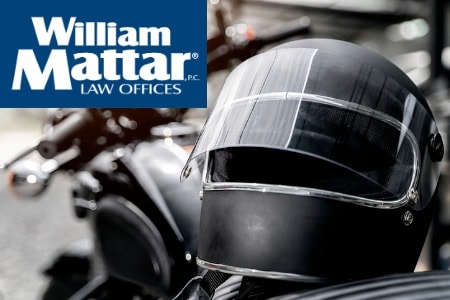Motorcycles represent freedom, adventure, and the thrill of the open road. But as beautiful as riding can be, it’s crucial to understand the risks that come along with it. Riders don’t have the same physical protection that cars and trucks provide, making them especially vulnerable in accidents.
For motorcyclists and their passengers in New York, wearing a helmet isn’t just good sense. It’s the law. But more importantly, the right helmet can save your life. For those who have experienced the life-changing impact of an accident, we’re here to break down everything you need to know about New York’s motorcycle helmet laws, why helmets are vital for safety, and how to ensure the helmet you wear provides the best protection.
Why Helmets Matter for Motorcyclists and Passengers
Unlike car drivers, motorcyclists are completely exposed to the elements and any hazards encountered on the road. There’s no seatbelt to hold you in place and no steel frame to absorb the impact of a collision. Without these barriers, the risk of serious injury or death increases significantly in a crash, which is why New York motorcycle laws focus heavily on safety requirements like helmets and protective gear.
One of the most common and devastating injuries motorcyclists experience happens to their head and brain. Yet, wearing a helmet drastically reduces this risk. The difference a helmet can make is clear and substantial. Choosing to ride without one can increase your odds of a life-altering head injury threefold compared to those who use helmets.
For motorcyclists, the simple act of wearing a helmet can mean the difference between walking away from a crash and facing lifelong consequences. When every ride carries the potential for danger, there’s no reason to take unnecessary risks.
Understanding New York’s Motorcycle Helmet Laws
For motorcyclists traveling across New York State, helmets aren’t optional. State law requires both operators and passengers to wear protective helmets when riding on a motorcycle.
Under the New York Vehicle and Traffic Law, it is explicitly prohibited to operate or ride a motorcycle without a helmet that complies with federal safety standards. These standards, as outlined in section 571.218 of the Federal Motor Vehicle Safety Standards, establish strict specifications to ensure helmets provide adequate protection in the event of an accident.
What Does the Law Require?
The specifics of New York’s helmet law include the following requirements:
- All motorcycle riders and passengers must wear an appropriate, safety-standard-compliant helmet while riding.
- Helmets must meet the federal standards set forth in FMVSS 218, which establish testing criteria for impact resistance, shock absorption, and penetration protection.
- Helmets must include a proper DOT label certifying compliance with FMVSS 218. Riders should ensure that this label is visible and legitimate, as counterfeit certifications do exist in the marketplace.
Fulfilling these requirements is more than a legal obligation. It is a vital step in enhancing personal safety. Riders who violate helmet laws may face penalties, but the real consequences of ignoring these rules can be far more severe. In the aftermath of a crash, questions about compliance with helmet laws can affect your claim, which is why you need a lawyer to protect your rights and build a strong case.
Safety Standards for Motorcycle Helmets
While it’s clear that helmets play a crucial role in protecting motorcyclists, not every helmet on the market offers the same level of protection. To meet New York’s legal requirements, helmets must adhere to rigorous federal safety regulations. But how can you ensure the helmet you choose meets these standards?
What to Look for in a Helmet
Federal safety standards, outlined under FMVSS 218, are designed to reduce injuries and fatalities among riders. Key safety features the law requires include but are not limited to:
- Impact Protection: Helmets must be able to absorb significant force in the event of a crash, reducing the potential for head injuries.
- Penetration Resistance: The outer shell of the helmet must be tough enough to prevent sharp objects from piercing through to the rider’s head.
- Retention System: Helmets must include a reliable chin strap and fastening mechanism to ensure they stay securely in place during a collision.
- Peripheral Vision: Helmets must allow for at least 105° of peripheral vision on each side of the rider’s head to ensure adequate visibility while on the road.
Certified Helmets
To verify that your helmet meets these requirements, check for a DOT certification label. The Department of Transportation (DOT) label is typically found on the back of the helmet and indicates compliance with federal safety standards. It’s essential to purchase helmets from reputable sellers and avoid potentially dangerous knockoff products that falsely display the DOT label. If you are injured in a crash and questions arise about helmet compliance, it is wise to get a lawyer for a motorcycle accident who can address these issues and protect your claim.
Counterfeit helmets, which may not meet federal safety standards, pose serious risks. Without proper testing and certifications, these helmets may fail to offer the necessary protection, leaving riders vulnerable during an accident. Always research your purchase and verify that the helmet you choose is genuine and up-to-standard.
Other Considerations
When choosing a helmet, comfort and fit are just as important as compliance. A properly fitting helmet stays snug on your head without causing discomfort, and it won’t shift out of position while riding. Many motorcyclists also prioritize features like ventilation, weight, and noise reduction to ensure a more comfortable ride.
Finally, helmets with additional safety features, such as face shields or built-in communication systems, can enhance both protection and convenience during your trips. Remember, the best helmet is one you’re willing to wear every time you ride. If you’re hurt after a motorcycle accident, having legal guidance can help you focus on recovery while your lawyer handles the claim.
The Life-Saving Benefits of Helmet Use
The statistics behind helmet use tell a compelling story. According to data from the Centers for Disease Control and Prevention (CDC) and the National Highway Traffic Safety Administration (NHTSA):
- Helmets saved the lives of 1,872 motorcyclists nationwide in a single year.
- An additional 749 lives could have been saved if every motorcyclist involved in a fatal crash had worn a helmet.
- Helmeted riders have substantially fewer medical expenses after a crash, due to the reduced likelihood of severe injuries.
These numbers reflect real people and real lives saved. They underscore the immense value of taking precautions and prioritizing safety at every turn.
While it may be tempting to ride without a helmet if you’re traveling a short distance or cruising at casual speeds, the risks simply aren’t worth it. Accidents can occur on any road, at any time, and even minor collisions can lead to tragic outcomes for unprotected riders. Injuries that are common in motorcycle accidents often include head trauma, fractures, and spinal damage, making the responsible choice to protect yourself and your loved ones every time you hit the road.
Common Misconceptions About Helmet Use
Despite the evidence supporting helmets, some riders still resist wearing them, attributing their reluctance to various misconceptions. It’s important to separate fact from fiction when it comes to motorcycle helmet safety.
“Helmets Feel Restrictive”
Some riders argue that helmets limit their vision or hearing, but this couldn’t be further from the truth. Modern helmets are designed with the rider’s perspective in mind, ensuring clear visibility and sufficient room for peripheral vision. They’re also engineered to minimize the impact on your awareness of traffic sounds and other external cues.
“I Only Ride Short Distances”
No matter how short the trip, accidents can happen. A ride around the block or a quick check of your motorcycle shouldn’t mean leaving your helmet behind. Safety is non-negotiable every time you sit in the saddle.
“Good Riders Don’t Need Helmets”
Even the most experienced riders can’t control external factors like road conditions, distracted drivers, or wildlife crossing the road. Wearing a helmet is a precaution that protects you from these unpredictable dangers, regardless of your skill level.
“Helmets Won’t Make a Difference If the Crash Is Major”
While it’s true that some accidents are simply too severe for any protective gear to guarantee survival, helmets provide a crucial buffer in many situations. They can reduce the severity of injuries and dramatically increase your odds of surviving a crash. If you are injured, it’s wise to ask a motorcycle accident attorney about your legal options and how to protect your rights.
Steps Riders Should Take After a Motorcycle Accident
Accidents, unfortunately, do happen. Even with a helmet and the right safety measures in place, injuries can still occur. Knowing what to do in the aftermath of a motorcycle accident can make a difference in your recovery and your ability to seek compensation for your injuries.
1. Seek Immediate Medical Attention
Your health always comes first. Even if you feel fine after the crash, injuries like concussions or internal damage may not be immediately apparent. A thorough medical evaluation can identify issues early on and help you document your injuries.
2. Gather Evidence
When you’re able, collect information about the accident scene. This might include photos of the vehicles involved, contact information for witnesses, and any other relevant details. This evidence can be critical for insurance claims or legal cases later on.
3. Report the Accident
Contact the police to file an accident report. This report serves as an official record and can help establish fault or liability.
4. Contact a Legal Professional
Motorcycle accidents often involve complex legal and insurance challenges. Seeking advice from an attorney experienced in motorcycle accident cases can help you protect your rights and pursue the compensation you deserve.
Hurt in a Motorcycle Crash? We’re Here to Support You
Suffering an injury while riding a motorcycle can be a life-altering experience. The physical, emotional, and financial toll of an accident can feel overwhelming, leaving you unsure of where to turn. At William Mattar, P.C. we understand the challenges faced by motorcycle accident victims, and we’re here to help.
With years of experience and a focus on motor vehicle accident cases, our compassionate legal team works tirelessly to secure justice for injured riders across New York State. From investigating the details of your case to fighting for maximum compensation, we’re committed to standing by your side every step of the way.
Don’t stay stuck handling this alone. Call us at (716) 444-4444 or fill out our online form for a free consultation. There are no upfront legal fees, and you only pay attorney’s fees if we secure compensation in your case. At William Mattar, we fight for you because your recovery matters.



